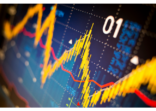While China’s inflation rate registered an increase of 2.3% in April, which is in line with market expectations, it is on a rising trend, said Shanghai-based Chaoping Zhu, China economist at the firm.
“We expect the inflation rate to rise in the second half of the year, coming from a commodity price rebound [that reached a low] during the same period a year ago,” Zhu told FSA.
“The sentiment on inflation might exert pressure on the renminbi exchange rate and lead to continuous capital outflow,” he added.
He expects the RMB to face further devaluation pressure, and $1 may trade at around RMB6.8 by the end of 2016, versus RMB6.5 at present.
To mitigate this risk, the government might attempt to stabilise the market with further measures, Zhu said.
“With the inflation rate increasing and real interest rate declining quickly, the PBOC might not cut its policy rate this year. However, fiscal spending by the government should still be the major tool for supporting the economy, hence the PBOC needs to reduce the fiscal deficit by sustaining easing measures.”
He expects a total of 50 basis points of cuts in the reserve requirement ratio of mainland banks to be adopted in the second quarter of 2016.
However, further easing in monetary policy is not expected to support China’s A-share markets and Hong Kong equities, as rising concerns over China’s corporate debt risks continue to dampen trading sentiment, he added.
Zhu said the media campaign might also be ramped up to stabilise the expectations for consumer price and economic policies, as exemplified by the recent interview with an “authoritative person” released by the mainland published People’s Daily.
However, a Chinese offical recently said the government would refrain from large-scale measures aimed at sparking growth, such as stock and property market intervention and currency support. Citing an unidentified “authoritative person”, People’s Daily reported Monday that Chinese economy must face up to its nonperforming loans and other risks associated with soaring debt levels.
The unnamed source also admitted that China’s economic trend in the coming years will be “L-shaped”, rather than “U-shaped”, and definitely not “V-shaped”, due to weak demand and overcapacity.
Even without government stimulus China’s economic growth will not drop abruptly, given its potential and resilience, according to the report.
_______________________________________________________________________________________________
Year-to-date, returns of the Hang Seng Index, the Shanghai and Shenzhen indices are all in negative territory, according to FE Analytics.
Hong Kong stocks have performed better, but the Hong Kong-Shenzhen Stock Connect, expected this year, is likely to spark volaitility,

















